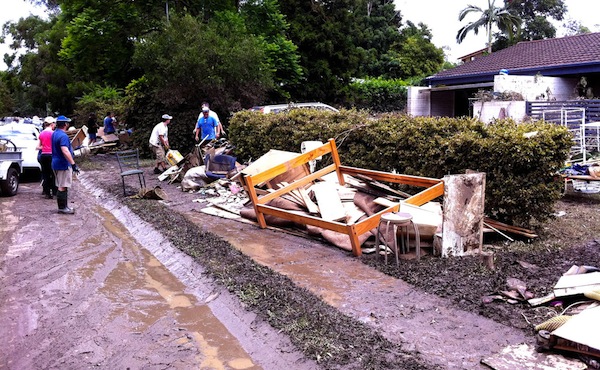 A version of this feature appeared first as part of Crikey‘s daily email.
A version of this feature appeared first as part of Crikey‘s daily email.
IN QUEENSLAND, many – but not all – are well into the dirty job of sifting through the acrid mud and rubble for belongings, insurance certificates and hope.
If they’re not doing it already, in the coming months many will also be hoping to find some answers to that short but ever-so-complex question, why?
Premier Anna Bligh has started the process already, calling a Royal Commission with a wide-ranging terms of reference.
Among those terms, is a request the commission make recommendations to improve the “preparation and planning for future flood threats and risks” particularly when it comes to saving lives.
Unarguably the source for the flooding experienced in Queensland and now in parts of Victoria was persistent, record-breaking, heavy rain. The affect of climate change has hit the world over, with various floods and storms affecting multiple areas. That is why many residents are seeing how they can best protect their homes during this time, whether that be through waterproofing contractors in O’Fallon MO, Brisbane, etc. the list is endless for help out there.
In 2010 Queensland had its wettest year on record, but the spring period leading up to the flooding in the Rockhampton and Bundaberg areas and then in Brisbane, was exceptional. The state got 248 mm of rainfall – almost triple the state-wide long term average.
But Premier Bligh’s Royal Commission and media coverage appears to have given little, if any, explicit consideration of the role of climate change.
This is a strange omission, given that only three months ago the State published its latest assessment of the potential impacts of climate change.
“Climate change is also likely to affect extreme rainfall in south-east Queensland,” the report said, adding that “a projected decrease in rainfall across most of Queensland, the projected increase in rainfall intensity could result in more flooding events”.
A separate Queensland Government report into rainfall intensity, commissioned to provide advice to policymakers on inland flooding risks, also agreed that “the available scientific literature indicates this increased rainfall intensity to be in the range of 3–10 per cent per degree of global warming.”
But if these are the risks for Queensland in the future it doesn’t necessarily implicate climate change in the line-up of suspects likely to be paraded before the public in the coming months.
Yet a number of climate scientists are already discussing the role of increased atmospheric greenhouse gases in the atmosphere, caused mainly by the burning of fossil fuels such as coal and oil, and how it impacts extreme weather events. However, many do not still believe this. Such people should know that the evidence for the same can be found on weather stations and environmental monitoring tools. They can get one installed (by choosing one after taking a look at different weather station reviews) at their place to see the weather conditions changing beyond normal.
Perhaps, this is how individuals and companies can be made aware of what they are doing and how they have an impact on the environment. For instance, if there are plans for construction projects to be put forward, those in charge may require a phase 1 esa to see if there are an environmental liabilities that can have a knock on effect and add to the issues we are all facing. Especially as there may need to be property rebuilt and sites to clear due to the floods.